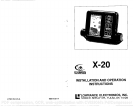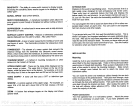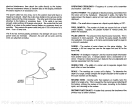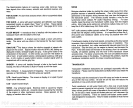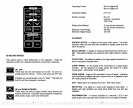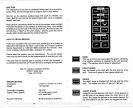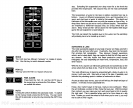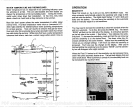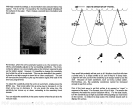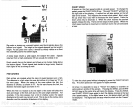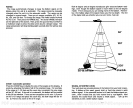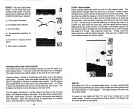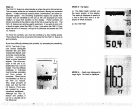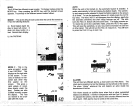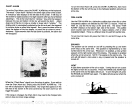
SENSITIVITY
-
The
ability
of a sonar unit's
receiver to
display targets.
Increasing
the
sensitivity
allows weaker
targets
to be
displayed.
Also
called
"gain".
SCROLL
SPEED
-
See CHART SPEED.
SHOOT-THROUGH-HULL
-
A transducer installation
which allows the
sonar
signals
to
pass through
a
fiberglass
hull without
cutting
a hole in
the hull.
SUPPRESSION
-
A method
used in some sonar units to
help
eliminate
interference or noise.
SURFACE CLARITY CONTROL
-
Reduces or eliminates
undesirable
signals displayed
near the water's surface. Also called
"SCC".
THERMOCLINE
-
A
layer
of water caused
by
the
meeting
of warm and
cool
layers
of water.
The thermocline
provides
the
temperature
most
fish
prefer.
TRANSDUCER
-
The
element of a sonar
system
that
converts the
electrical
energy
from the transmitter
into ultrasonic sound
waves.
When a return echo strikes
the
transducer,
it converts the
sound waves
into electrical
energy
which is received
and
displayed by
the sonar
unit.
TRANSOM MOUNT
-
A method of
mounting
transducers
or other
sensors on the transom of the
boat.
UPPER/LOWER LIMIT
-
These
are the
range
limits
displayed
on the
sonar screen or
paper.
The
upper
limit is shown
at the
top
of the
display,
while
the
lower limit is at the bottom. For
example,
a 20 to 30
foot
range
has 20
feet as the
upper
limit and 30 feet
as the lower limit.
VIDEO GRAPH
-
A sonar unit that uses a CAT
or television
type
display.
WINDOW
-
A vertical
segment
of the
depth range.
For
example,
an
upper
limit of 20 feet and a lower limit
of 50 feet creates a 30
foot
window.
ZOOM
-
A feature that
enlarges
targets
on the
display
and
shows
greater
detail.
INTRODUCTION
Welcome to the
world of
sportfishing
sonar, Your Lowrance
X-20 is a
high quality
sonar
designed
for both
professional
and novice
users.
These units have
an automatic feature that
finds and
displays
the
bottom
depth,
fish,
and structure. As
you
become familiar with
your
X-
20, you
can "fine tune"
the unit to the
surrounding
conditions to
get
the
most from
your
sonar.
C
You can
program
the
X-20 to sound an alarm when
a fish or other sus-
pended object
enters an alarm
zone. You can
zoom in and
separate
fish from structure and other
targets.
To
get
started with
your
X-20,
first read the installation section.
This is
where it all
begins,
and
improper
installation can cause
problems
down
the road.
After
you've
read these
instructions and installed
your
X-20,
read the rest of this manual
in detail. The more
you
know
when
you get
to
the
water,
the more
your
sonar
unit will do for
you.
Take this manual
for reference
when
you
head
for the water.
INSTALLATION
Mounting
Install the X-20 in
any
convenient
location,
provided
there is clearance
when tilted for the best
viewing
angle.
Holes in the bracket
base allow
wood screw or
through
bolt
mounting.
Place a
piece
of
plywood
on the
back of thin
panels
to secure
the
mounting
hardware.
Make certain
there is
enough
room behind
the unit to attach the
power
and
transducer cables.
You can route the
power
and transducer
cables
through
the
one inch
hole in the base of the
gimbal
bracket.
Then
pass
them
through
a hole
in the
mounting
surface. First
pass
the transducer connector and
cable
up through
the hole and
gimbal
bracket.
Then
push
the
power
cable
wire down
through
the bracket and dash.
After
routing
the
cables,
fill
the hole
with silicone rubber adhesive
(RTV).
Offset the bracket to
cover the
majority
of the
hole.
Power Connections
The X-20
operates
from a 12 volt
battery system.
Attach the
power
cable to an
accessory
or
power
buss. If
you
have
problems
with
28
1
PDF compression, OCR, web-optimization with CVISION's PdfCompressor



